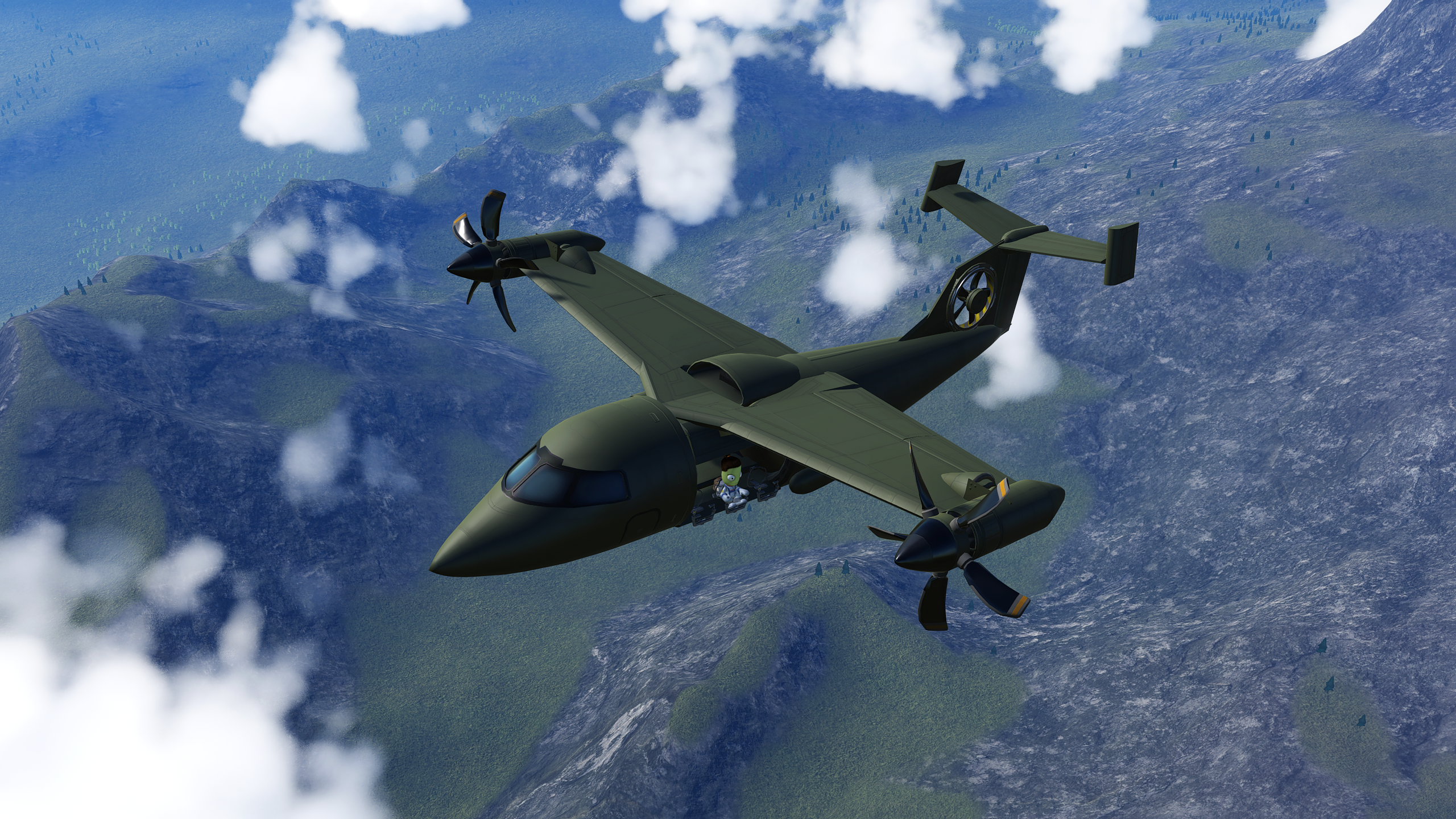R-250 Falcus
|
R-250
Sloppmunjet R-250 Falcus
|
|||||
|---|---|---|---|---|---|
| Tiltrotor transport | |||||
 |
|||||
| An R-250 Falcus overflying Lumia, Ikonia, 2190. | |||||
| National Origin | Ikonia | ||||
| Production History | |||||
| Designed | |||||
| 2173 - 2178 | |||||
| Produced | |||||
| 2182 - present | |||||
| Designer | Obbscon Company | ||||
| Number Built | 134 | ||||
| Service History | |||||
| In Service | |||||
| 2182 - In serivce | |||||
| Used By | Ikonia | ||||
| Aircraft Characteristics | |||||
| Dry Mass | 11,551 kg | ||||
| Length | 11.8 m | ||||
| Width | 11.8 m | ||||
| Height | 4.0 m | ||||
| Propulsion | 2 x Obbscon Company SR125 turbine engines | ||||
| Maximum Velocity | 290 m/s | ||||
| Operational Range | 1,000 km | ||||
| Crew | Two pilots Eight passengers |
||||
The Sloppmunjet R-250 Falcus is an Ikonic multi-use military tiltrotor in service with the Ikonic Air Force. It is capable of VTOL operations like a helicopter, whilst combining the speed and long range of a conventional turboprop aircraft. After the disaster of the Dustgate bombing of 2172, in which domestic terrorists attempted to assinate apex stone by detonating IEDs and holding civilians hostage, then need for a faster and more versatile insertion platform was recognised by the Armada Ikonicus. The roof in which the terrorsits were holding hostages was accesible only by helicopter, and all of the hostages were executed before an IH-12 Funbee could arrive, leading to massive backlash and fierece criticism against the military.
The greater council challenged aerospace companies to produce an aircraft that could prevent a repeat of the fiasco, with a minium speed requirement of 250m/s (560mph) Sloppmunjet engineers proposed a design which combined the vertical landing capabilities of a helicopter, neccesary for operations from a ship's deck, with speed and range comparable to contemporary jet aircraft. The R-250, named after the speed requirement, was marred with technical issues and suffered a long development process.
The Falcus is operated by the Armada Ikonicus for carrying cargo and personnel, and by the Ikonic Coast Guard for search and rescue operations.
Design
The R-250 uses two nacelles fixed to the ends of each wing, powered by two Obbscon Company SR125 turbine engines, which can be rotated 89 degrees to allow for horizontal flight. Unlike similar tiltrotor designs, the two nacelles do not roate indepdently to provide yaw control. Instead, a conventional tail rotor is used as this provides more stable flgith characterisitcs when hovering, whilst also reducing wear and complexity. It has a top speed of 650 mph (1046 km/h), far exceeding the design brief and allowing for rapid response times.
Specifications (R-250)
General characteristics
- Crew:
- 2 pilots
- 8 passengers
- Length: 38 ft 8 in (11.8 m)
- Width: 38 ft 8 in (11.8 m)
- Height: 13 ft 1 in (4.0 m)
- Empty weight: 25,465 lb (11,551 kg)
- Powerplant: 2 x Obbscon Company SR125 turbine engines
Performance
- Maximum speed: 650 mph (1046km/h, 565 kn)
- Range: 1,000 km
- Service ceiling: 20,000 ft (6,100 m)
See also
Aircraft of Comparable Role, Configuration, and Era
- MV-42 Hummingbird – Aquarian VTOL rotary-wing aircraft
- ZH-60 Greyhawk – Zokesian VTOL rotary-wing helicopter